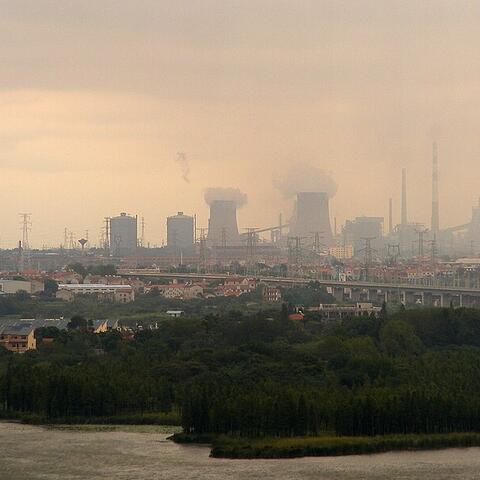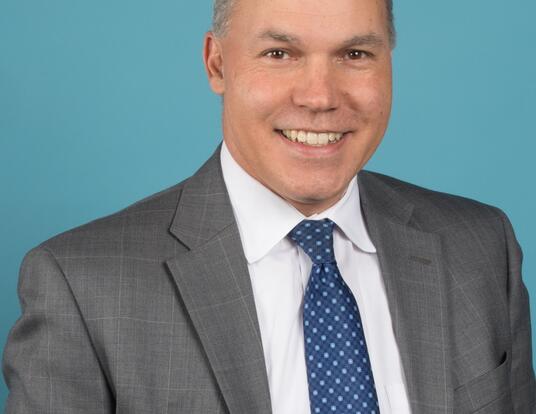Darkness at Noon
Forest fires and their impact on the climate of South America


On August 19, 2019, the afternoon sky went dark in São Paulo, Brazil. A metropolitan population roughly the size of Sri Lanka stood bewildered, looking up into the starless black. Was the apocalypse upon them?
“There were several factors that caused the darkness,” says climate scientist Eimy Bonilla, “but smoke from forest fires in the central Amazon basin was a big part. Some scientists were concerned about carbon monoxide in the air people were breathing. It was pretty shocking.
While the darkness that enveloped one of the world’s largest cities was not a sign of the last judgment, it may be a troubling portent of what the future holds. Recent years have seen a dramatic uptick in forest fires in the Amazon basin. As a PhD student in environmental science and engineering at Harvard’s Graduate School of Arts and Sciences, Bonilla studies the fires as part of a wider effort to understand their impact across South America. Her research could provide important insights for those trying to gauge the effect of air pollution on public health and climate change.
Back to Black
The Amazon basin runs over 1,700 miles through eight different South American countries, but two-thirds of the region lies in Brazil. The climate is tropical, with warm, humid, and rainy weather. But Bonilla says that’s changing.
“The Amazon maintains the humidity, so usually the vegetation is just wet enough that it wouldn't catch on fire,” she says. “As more fires are occurring, there are fewer areas to hold the moisture. The dry season is usually three or four months but it’s getting longer now, which is changing the vegetation and leading to more fires.”
Today, most fires in the region are induced by humans clearing the forest for agriculture or mining. Developers cut down the trees, let them lie and dry out, then burn the organic matter to clear it away. The fires produce tiny particles that fill the air. Bonilla says that this particulate matter along with smoke can make its way across the continent.
It can travel thousands of kilometers in the air, she says. “Think of São Paulo. It’s on the east coast of Brazil. Most of the smoke came from fires in the Amazon, which is in the west of the country, as well as from Bolivia, west of Brazil, and Paraguay, below and in the center of South America. That’s how far it can travel.”
A member of Professor Daniel Jacob’s group in the Department of Earth and Planetary Sciences and a student of environmental sciences and engineering at the John A. Paulson School of Engineering and Applied Sciences, Bonilla uses satellite data to identify forest fires in the basin and computer models to simulate how air travels and track emissions from the burns. “The model that we use to study forest fires hasn't been used that much to measure impacts in South America,” she explains. “That’s one of the reasons I chose to look at the region. It’s understudied.”
One of Bonilla’s main research projects explores the effect the fires have on climate change, specifically the melting of glaciers. The burns in the Amazon basin produce a lot of black carbon—essentially the ash and soot generated by incomplete combustion of biomass. Bonilla’s research looks at the material that carries through the air across the continent to see how much lands on the glaciers of the Andes mountains.
“People rely on the runoff from glaciers,” she notes. “They’re melting because of climate change and rising temperatures, but it could also be because their surface is getting darker with black carbon and that traps more of the sun’s energy.”
Bonilla’s work won’t be able to tell climatologists how much of the melting is due to black carbon, but it may tell them how much of the material that lands on the glaciers originates from the Amazon fires. (Spoiler alert: It’s a lot.)
We're seeing that around 20 to 30 percent of all the black carbon that ends up on the glaciers could originate from the forest fires,” she says. “The rest are from fossil fuel emissions: factories, vehicles, etc.
Particular about Particulates
Bonilla’s other project looks at PM 2.5—particulate matter 2.5 micrometers or less in diameter generated by forest fires. (A human hair is about 70 micrometers thick.) In her research, she studies how much PM 2.5 ends up in the air and is breathed by nearby Indigenous populations often ignored by researchers. “With my project, I’m trying to get an estimate of how many people are living in the areas affected by the forest fires, how many fires are occurring near them, and how often they’re breathing that air,” she says.
The preliminary results of Bonilla’s study indicate a dramatic rise in the amount of small particulate matter in Indigenous communities. “In these territories, we’re seeing up to 70 micrograms per cubic meter of PM 2.5 during the dry season,” she says. “We see those levels for as long as three to four months at a time. The World Health Organization (WHO) guidelines for PM 2.5 is 25 micrograms per day and an average of no more than 10 micrograms per day annually. So those Indigenous communities are way above the guidelines.”
It’s no wonder, then, that public health advocates are concerned about a spike in respiratory diseases like asthma, lung disease, and even cancer. Moreover, Bonilla says the course of all these conditions is compounded by a lack of access to healthcare.
With my project, I’m trying to get an estimate of how many people are living in the areas affected by the forest fires, how many fires are occurring near them, and how often they’re breathing that air.
“Human Rights Watch, Instituto de Pesquisa Ambiental da Amazônia, and Instituto de Estudos para Políticas de Saúde recently released a joint report that said some of these Indigenous communities live 700 kilometers from the nearest hospital,” she says. “Someone with asthma might not be able to see a doctor for days.”
Bonilla’s faculty advisor Dr. Loretta Mickley, senior research fellow in chemistry-climate interactions at Harvard’s John A. Paulson School of Engineering and Applied Sciences, says that the student’s work helps scientists understand the “cascade of consequences” for people and the natural environment triggered by fires and deforestation in the Amazon basin.
“Through the use of health data, observations, and modeling,” Mickley says, “Eimy’s work better quantifies the impact of smoke from Amazonian fires on human health, particularly in Indigenous communities. With regard to the Andean glaciers, observations show that these glaciers have been melting in recent decades, at least in part due to climate change. Eimy’s research will assess the contribution of smoke to the observed melting.”
Given Bonilla’s focus on South America, it may come as a surprise to learn that she has never visited the region. Although she was born in El Salvador, her parents migrated to Somerville, MA, when she was eight years old. A first-generation college and graduate student, Bonilla has stayed close to home for her education. Tufts University, where she did most of her undergraduate work, and now GSAS are both minutes away from where she grew up. She says she enjoys being near to her mother, a teacher’s aide, and her father, a dental assistant, who have always supported her passion for science and scholarship.
“I was very lucky,” she says. “They always encouraged us in school and there was never any question that we would go to college. My dad was always very supportive of my interest in science. We would watch NASA TV shows growing up. That inspired my interest in astronomy, which eventually led to environmental engineering.”
Bonilla is close to finishing her doctoral work and plans to graduate in 2022. She says that she wants to leverage her PhD to work on “solution-oriented projects” that help improve the lives of marginalized people in different parts of the world. She also wants to raise awareness of how changes in the environment impact these communities.
“I want to work with those who are often ignored when environmental problems arise,” she says. “I want to give them access to science and scientists and maybe even work with them directly on policy change. Most of all, I want to open up a conversation about the ways that marginalized populations are affected by big changes in the natural environment. The Indigenous communities—the ones closest to the fires—are constantly breathing that air. Hopefully, this research can lead to changes in policies that protect them—and the Amazon.”
Photo by Tony Rinaldo; Banner courtesy of Shutterstock
Get the Latest Updates
Join Our Newsletter
Subscribe to Colloquy Podcast
Simplecast





